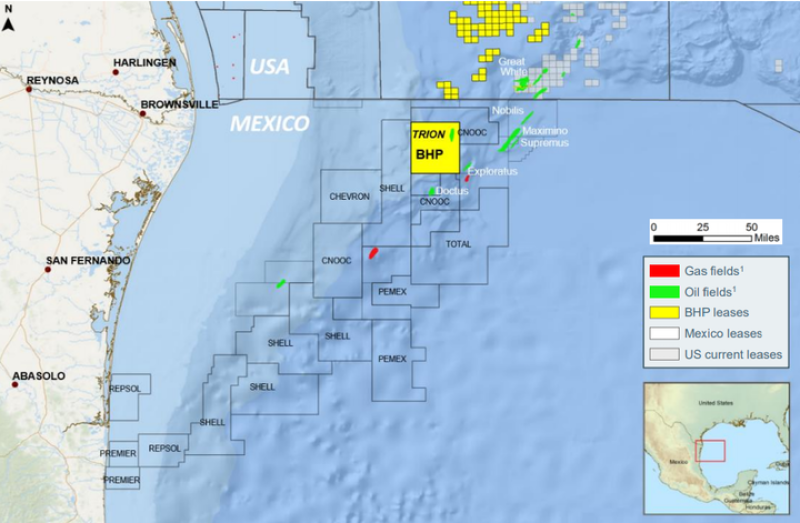Woodside has made a final investment decision (FID) to develop the $7.2- billion Trion discovery in the Mexican Gulf. The Australian-based producer is targeting first oil from the area in 2028.
The development scheme is based around a semisubmersible-based floating production unit (FPU) with oil production capacity of 100,000 B/D. The FPU will be connected to a floating storage and offloading (FSO) vessel with a capacity of 950,000 bbl of oil. Woodside estimates the field holds just under 500 million bbl of recoverable oil equivalent.
The field will be developed via 18 wells (nine producers, seven water injectors, and two gas injectors) drilled in the initial phase, with a total of 24 wells drilled over the life of the project. Natural gas that is not reinjected or used on the FPU will be shipped to Mexican markets.
The development is subject to joint-venture approval and regulatory approval of the field development plan, expected in the fourth quarter of 2023. Woodside is the operator with a 60% participating interest, and Pemex holds the remaining 40%.
“Trion is a valuable resource with a mature development concept,” said Woodside Chief Executive Meg O’Neill. “The investment is aligned with Woodside’s strategy, exceeds Woodside’s capital allocation framework targets, and will be a strong contributor to Woodside’s cash flows, shareholder returns, and the funding of future developments in oil, gas, and new energy. The project’s tendering process has resulted in approximately 70% of total forecast capital expenditure as lump sum or fixed rates, with key contracts to be progressively executed following joint venture approval.”
The Trion field is in the Perdido Fold Belt of the Gulf of Mexico, at a water depth of 2,500 m approximately 180 km off the Mexican coastline and 30 km south of the US/Mexico maritime border. The project would represent the first oil production from Mexico’s deepwater, with potential for future discoveries to be tied back to Trion facilities.
The Trion field was discovered by Pemex in 2012. The operator drilled the discovery well to a total depth of 4,500 m and encountered commercial light- oil volumes. An appraisal program confirmed the volume and composition of the hydrocarbons present in the field.
In 2017, BHP Petroleum and Pemex signed an agreement for the development of the discovery. Following the merger of Woodside and BHP Petroleum, the agreement carried over to Woodside.
According to Woodside, the investment is expected to deliver an internal rate of return greater than 16% with a payback period of less than 4 years.
O’Neill added that Trion has an expected carbon intensity of 11.8 kgCO2-e/BOE average over the life of the field, which is lower than the global deepwater oil average. Two-thirds of the Trion resource is expected to be produced within the first 10 years after startup.


